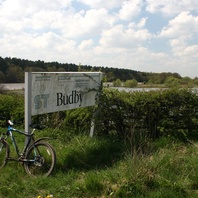
Viking Names
Budby
Budby, in the Bassetlaw Wapentake of Nottinghamshire, likely comes from the Old Norse male personal name Butti (or possibly Botti)and the Old Norse element bý ‘farm, settlement’. Budby is a joint parish with Perlethorpe.
Read More
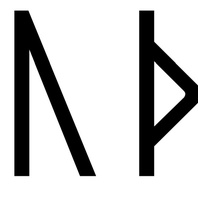
Viking Names
Gyda
Gyða appears early in Norway and is frequent there but it is not as common in Iceland. It appears in two Danish runic inscriptions and is common in other Danish sources. The name also appears in a few Swedish runic inscriptions and is found in later Swedish sources. Gyða is also attested in medieval documents from Lincolnshire and Domesday Book for Yorkshire. The name is a pet form of Gyríðr and it has been suggested that it was borrowed from England because several of the oldest carriers of the name appear to be of mixed Nordic and English origin.
Read More

Viking Names
Snort
Snǫrtr was originally a byname similar in meaning to Norwegian snerting ‘quick fellow’. It is fairly common as a personal name in Iceland. The genitive singular form of the name, Snartar, is the first element in Snarford, Lincolnshire.
Read More
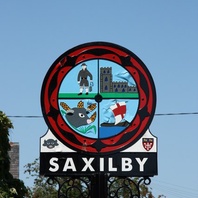
Viking Names
Saxilby
Saxilby, in the Lawress Wapentake of Lincolnshire, comes from the Old Norse male personal name Saksulfr and Old Norse by ‘a farmstead, a village’. It is a joint parish with Ingleby.
Read More
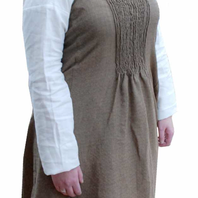
Viking Objects
Reproduction Women’s Clothing Set
The woollen strap-overdress is brown broken-diamond twill. A complete example of this dress has never been found, but this reconstruction is based on a composite of known archaeological finds. The narrow straps are often found mineralised inside the brooches, the pleated front section is based on an archaeological find from Køstrup, in Denmark, and the asymmetrical back panels are based on an original find from Hedeby, in Denmark. The underdress is of bleached linen, based largely on small traces of archaeological material from Birka, Sweden, Dura, Finland, and contemporary depictions. The woollen cloak is of thick yellow diamond twill with fringed edge. The vegetable-tanned leather toggled turnshoes are based on originals found during excavations at Coppergate, in York.
Read More
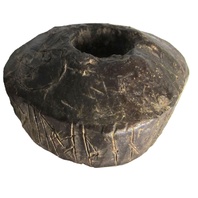
Viking Objects
Saltfleetby Spindle Whorl (LIN-D92A22)
A lead spindle whorl found at Saltfleetby St Clement, Lincolnshire, and inscribed with runes. The dating of the spindle whorl is uncertain, and dates in the late Viking Age, the early eleventh century, or even the twelfth century, have been suggested. The spindle whorl is inscribed with Scandinavian runes that appear to mention the Norse gods Odin and (possibly) Heimdall. The object is likely to have been produced locally, though the runes demonstrate contacts with the Scandinavian world of the time, perhaps especially Norway. John Hines has suggested the translation ‘Óðinn and Heimdallr and Þalfa, they are helping you, Úlfljót, and …’. For further discussion of the text, see the open-access article by Jesch referenced below. For more on runes, see our Runes page.
Read More
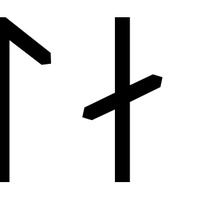
Viking Names
Aslak
The male name Áslákr is common in Norway in both the Viking Age and later, and also occurs in a few runic inscriptions from Denmark and Sweden. It forms the first element of the Nottinghamshire hybrid place-name Aslockton and is also found in Aslackby in Lincolnshire.
Read More

Viking Names
Bark
The Old Norse male personal name Barkr originated as a byname. The name is related to the Old Norse noun bǫrkr (genitive barkar) ‘bark’. One of the settlers of Iceland bore the form Bǫrkr and the name appears as an element in a few Western Scandinavian place-names. Bark is found as a byname in Sweden. Barki is potentially a side-form of Barkr or could be from barki ‘throat’- also a byname. Barkr is the first element in the place-name Barkby, Leicestershire and this place-name was later affixed to Barkby Thorpe, its daughter settlement.
Read More
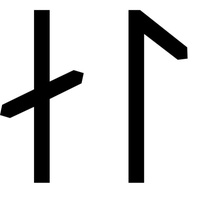
Viking Names
Val
Valr is an original byname meaning ‘hawk, falcon’. Valr is recorded as a male personal name and byname in West Scandinavia and is found in a Swedish runic inscription. Valr is the first element in the place-name Walesby, Nottinghamshire, and a place of the same name in Lincolnshire. Walshcroft Wapentake in Lincolnshire also contains either this name or the Old Norse male name Váli and Old Norse kross, the cross probably marking the location of the Viking Age meeting-place. Cameron suggests that the same man gave his name to Walesby and the wapentake.
Read More
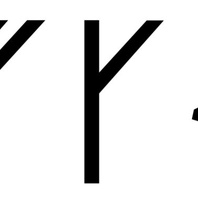
Viking Names
Alfgeir
Álfgeirr was not a common name in Viking Age Scandinavia, but it is attested in all of the Scandinavian countries and Iceland. The personal name was once found as the first element of the place-name Algarthorpe, Nottinghamshire; however, the village is now deserted. The name is an Old Norse compound formed from Álf-, identical with alfr ‘elf’, which is not particularly popular in Scandinavian names, and –geirr, ‘spear’ which is a common element in Old Norse personal names.
Read More
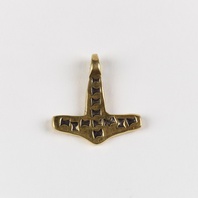
Viking Objects
Reproduction Hammer-shaped Pendant
A gold hammer-shaped pendant, popularly called a Thor’s hammer pendant, from Spilsby, Lincolnshire. These may have been worn to show devotion to the god Thor, or to secure the god’s protection, although there is little evidence to support this interpretation. Pendants like this have been found made of lead, copper alloy, silver and gold, showing that many different strata of society could have worn them.
